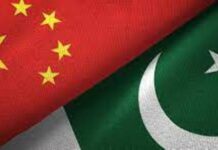From Zhang Guanghao,
China has signed over 200 Belt and Road cooperation agreements with more than 150 countries and over 30 international organizations. They account for around 40 percent of the world’s economy and 75 percent of the global population. Different places in China have actively participated in and organized projects under the Belt and Road Initiative.
Shaanxi Province in northwest China has been conducting scientific and educational communication for many years.
The capital city, Xi’an, has held an international training program focused on climate change three times. The program offers sci-tech training courses for Belt and Road countries and some other developing countries. More than 40 young researchers from 14 countries have participated in the program and conducted scientific communication and cooperation.
Northwestern Polytechnical University has jointly launched an international cooperation coalition on cultural heritage with the National Museum of Kazakhstan and the National Academy of Sciences of Kyrgyzstan. It focuses on cultural relics protection based on new technology and new materials. So far, at least 65 colleges, scientific institutions, and enterprises from 16 countries have become members of the coalition.
Northwest A&F University has worked with universities and enterprises from countries such as Kazakhstan, Uzbekistan, Kyrgyzstan, and Tajikistan and established an agricultural demonstration park, aiming to cultivate talents in agriculture and develop the local economy.
Shaanxi is among the increasing number of provincial-level regions in China actively conducting international communication and exchanges with the partner countries of the Belt and Road Initiative.
The International School of Medicine of Zhejiang University in Yiwu aims to spread Chinese culture and deepen medical and cultural exchanges with these countries. This year, the school recruited 94 international undergraduates from 25 countries and 132 postgraduates from home and abroad. The majors include basic medicine, clinical medicine, public health, and nursing.
19-year-old Pemika is among 36 undergraduates from Thailand. Thirty came from different cities and schools in Thailand and gathered at Bangkok airport before going to Zhejiang. They will spend the next six years in China. Pemika expects it to be a good learning experience and says she will consider staying longer in China if she can learn the Chinese language well. Besides Thailand, these undergraduates come from other countries such as India, Iran, South Korea, Pakistan, and Indonesia.
In Shanxi, creative cultural products from the Belt and Road countries have been added for the first time at this year’s Shanxi Cultural Industries Fair. The exhibitors are from Afghanistan, India, Vietnam, Nepal and Iran. Products like hand-made carpets from Afghanistan and Iran, Aquilaria from Vietnam, and thangka from Nepal will be displayed.
These represent a small part of many places in China conducting international cooperation and exchange under the Belt and Road Initiative in line with their conditions, resources, and characteristics. As China is always ready to share its development opportunities in the Chinese path to modernization, more and deeper international communication can be expected.
(end)




